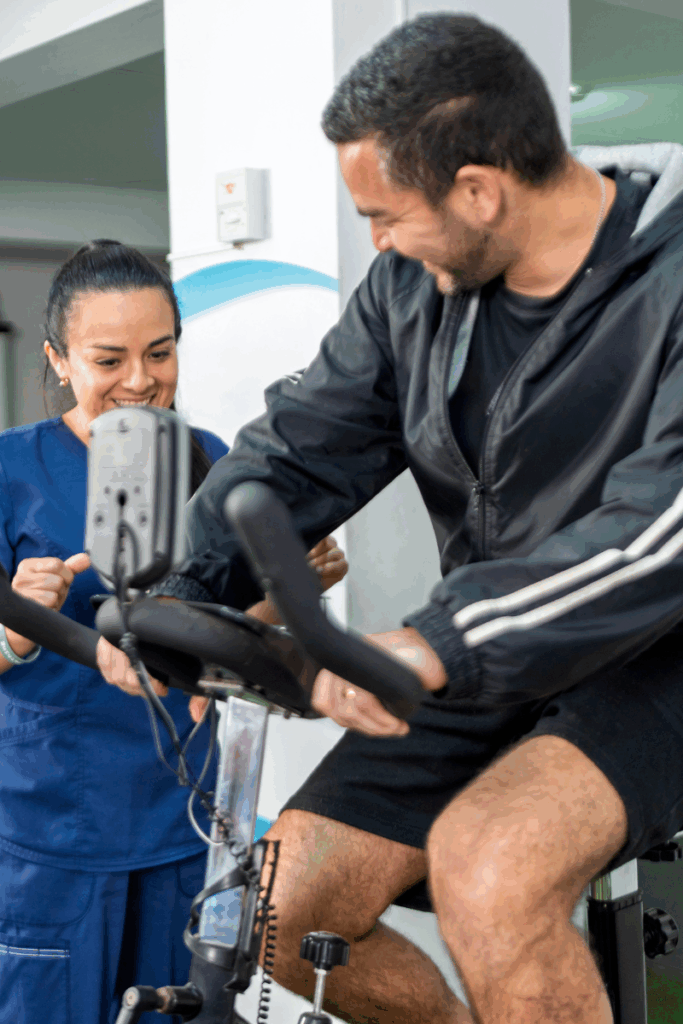How Physical Therapy Helps You Recover Faster After Orthopedic Surgery
Posted by: Reform Physical Therapy in Injury Rehabilitation, Physical Therapy, Post-Surgery Recovery, Reform PT Education on November 20, 2025
Physical therapy after orthopedic surgery plays one of the most important roles in helping your body heal, move safely, and regain strength. Many people think recovery is only about rest, but guided movement is what helps reduce pain, improve mobility, and speed up your return to daily life. With the right plan and support, you can recover with more confidence and comfort.
Whether you’ve had a joint replacement, a ligament repair, a fracture fix, or another type of orthopedic procedure, PT helps you move forward with more confidence, control, and comfort.


Why Physical Therapy Matters After Orthopedic Surgery
When you have surgery on a joint, bone, or ligament, your body goes through major changes. Muscles can weaken, swelling can make movement difficult, and the surgical area needs time to regain strength and stability. Without guidance, it’s easy to move too much, too little, or in the wrong way — all of which can slow recovery.
Physical therapy helps you heal the right way. Your therapist knows what your specific surgery needs at every stage and builds a plan designed to match your body’s timeline.
This is exactly why physical therapy after orthopedic surgery is considered one of the most important parts of a safe and effective recovery plan.
Reducing Pain and Swelling
After surgery, pain and swelling are normal. Your PT uses techniques to help manage these so you feel comfortable enough to move. This may include gentle hands-on therapy, controlled exercises, elevation techniques, cold therapy, and safe stretches. When swelling goes down, your joint moves better and healing speeds up.
Restoring Mobility and Flexibility
Surgery often causes stiffness, especially in joints like the knee, hip, ankle, shoulder, or spine. Physical therapists guide you through movements that slowly increase your range of motion without pushing too far. Over time, these exercises help you bend, straighten, rotate, and move more freely.
This step is important because stiffness can quickly limit your progress if it isn’t addressed early.
Rebuilding Strength Safely
Muscles weaken quickly after surgery, especially when a joint has been immobilized. PT helps restore strength in a specific and safe way. Your therapist chooses exercises that target the right muscles without putting too much pressure on the surgical area.
As you grow stronger, everyday tasks like walking, climbing stairs, lifting, or reaching become easier and more natural.
Improving Balance and Stability
Many orthopedic surgeries — especially knee, ankle, hip, and spine procedures — affect your balance. Your PT helps retrain your muscles and nervous system so your body feels secure again. Better balance lowers your risk of falls and injuries, which is essential during recovery.
Training Safe Movement Patterns
After surgery, your body might develop new habits to avoid pain, even if those habits aren’t helpful. You may limp, shift your weight unevenly, or rely too much on one side of your body. These patterns can cause long-term discomfort.
Physical therapists watch how you sit, stand, walk, and use your body. They help you relearn safe, natural movement so your joints, muscles, and bones function the way they should.


Building Confidence in Your Body Again
One of the hardest parts of post-surgery recovery is trusting your body after a major procedure. It’s normal to feel nervous when you start moving again. PT gives you step-by-step guidance so you know exactly what is safe. This confidence helps you stay consistent and motivated, which speeds up recovery even more.
Preventing Complications
Physical therapy plays a major role in preventing complications like stiffness, scar tissue buildup, muscle loss, blood clots, falls, and long-term weakness. By keeping your body active in the right way, PT supports healing and reduces the chance of setbacks.
Helping You Return to Daily Life
Your physical therapist helps you get back to the things that matter most — walking comfortably, driving again, working, completing household tasks, playing with your kids or grandkids, and getting back to hobbies. Your plan is built around your life, not just your surgery.
As you progress, your therapist continues updating your exercises so they match your new level of ability.
The Role of Home Exercises in Faster Recovery
One of the keys to a strong recovery is what you do between appointments. Your PT teaches you easy home exercises that support your healing every day. Even a few minutes of focused movement can help reduce stiffness, maintain progress, and build strength.
Following your home plan consistently often means faster results and a smoother recovery overall.
When to Start Physical Therapy After Surgery
The timing depends on the type of surgery, but many people begin PT within a few days or weeks — once cleared by their surgeon. Starting earlier (when appropriate) helps prevent stiffness, reduce swelling, and keep your body moving safely during the early stages of healing.
Working Together: Your Surgeon + Your Physical Therapist
Your PT and surgeon work as a team. Your therapist follows your surgeon’s guidelines, updates them on your progress if needed, and makes sure your care plan stays safe and effective. This kind of teamwork helps your recovery stay on track from start to finish.
When to Contact Your PT or Surgeon
You should reach out if you notice increased swelling, sharp pain, redness around the incision, difficulty moving, or if something simply doesn’t feel right. Your PT helps guide you through what’s normal and what may need attention.
Conclusion
Orthopedic surgery is only the first step. Physical therapy is what helps you regain strength, restore movement, rebuild confidence, and return to your normal life faster. With the right plan, support, and guidance, you can recover safely and keep your body strong long after surgery is over.
Ready to feel better? Contact us today to schedule your first session.
